Indoor Digital Signage Display Solutions for Business Environments
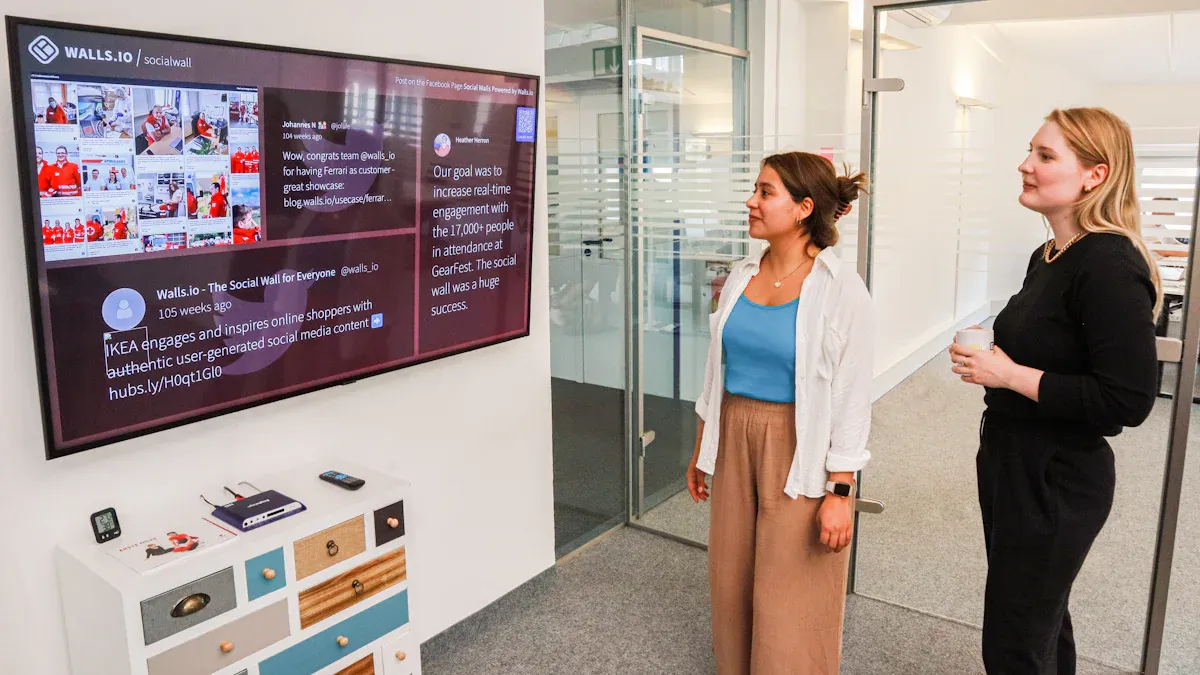
You can find indoor digital signage in many places. You see video walls, kiosks, menu boards, and interactive displays. These digital signage solutions help you share news and catch people’s eyes. They also make customer experiences better. The market for these displays is very big. It is almost $29 billion in 2024. If you want the best results, look for features like 4K resolution. You should also look for 24/7 operation and interactive options. Think about your business and what you want to say before you choose a solution.
Key Takeaways
Pick indoor digital signage with 4K resolution and 24/7 use. This gives you clear, bright images all day long.
Interactive digital signage helps customers get involved. It can help you sell more. It also makes waiting feel shorter.
Cloud-based digital signage lets you change content from far away. You can control many screens from one spot.
Video walls make a big visual impact. They grab attention and help people remember your brand.
Plan your digital signage for your business needs and budget. Make sure you get good help from your vendor for the best results.
Indoor Digital Signage Systems
Key Features
When you pick indoor digital signage, you want screens that get noticed. Most digital signage systems now have 4K resolution. This makes pictures look sharp and clear, even from far away. You also see bright colors and wide viewing angles. These things help your message stand out in busy places.
Many digital signage systems work all day and night. You do not need to worry about screens fading or breaking. Commercial-grade displays, like the ones in retail digital signage or window digital signage displays, are made with strong materials. They can handle lots of use in busy spots. Some models, like the Samsung QM75R or NEC X841UHD, show up to a billion colors and are very bright. You can count on these screens to work any time.
You have many ways to set up your screens. Wall mounts save space and keep screens safe. Menu boards are great for restaurants and cafes. LCD video walls make a big impression in lobbies or meeting rooms. These walls can show one big picture or split into many moving images.
Tip: Pick displays with UHD 4K resolution and 24/7 operation for the best results in busy business places.
Business Benefits
Indoor digital signage systems help you share news fast. You can change what is on the screen right away. This keeps your team and customers updated. Businesses get great results from these systems. For example, 60% of workers remember company news better with digital signage. Productivity can go up by 25%. Employee engagement can rise by 350%. Pictures help people remember messages longer—up to 65% after three days.
Here’s a quick look at the numbers:
Metric | Statistic | Explanation |
|---|---|---|
Employees reporting better information retention | 60% | Digital signage keeps staff informed |
Increase in employee productivity | 25% | Better communication boosts output |
Rise in employee engagement | 350% | More interaction with digital signage |
Effectiveness in brand awareness | 47.7% | Stronger corporate identity |
Information retention after three days | 65% | Visuals stick in memory |
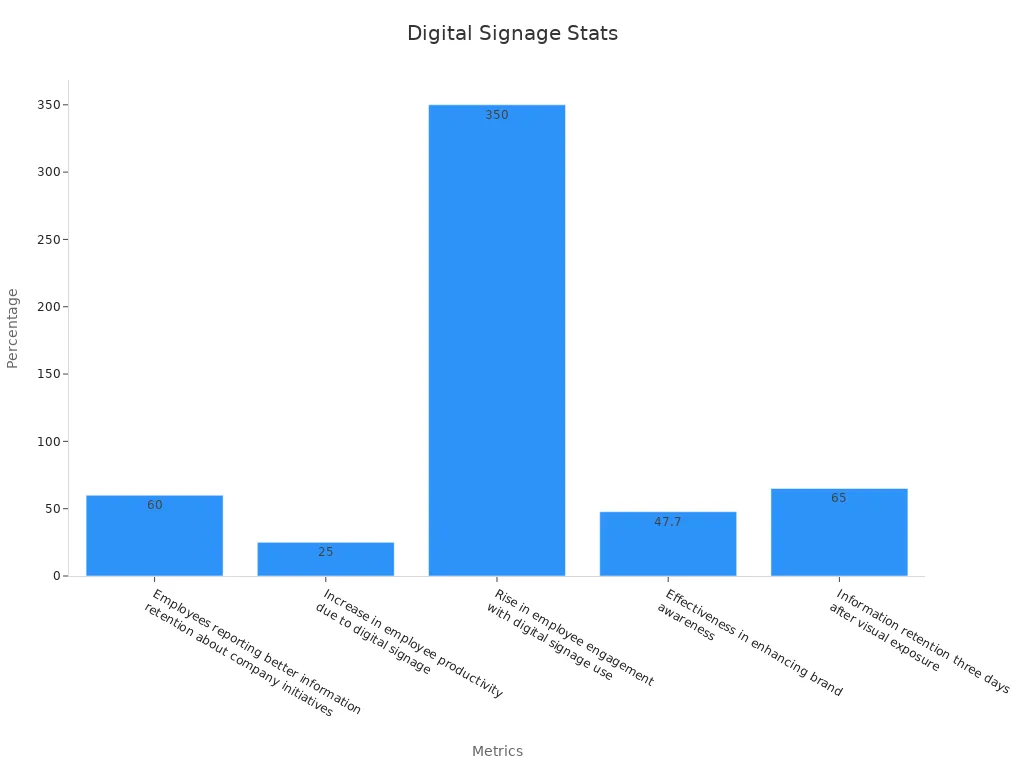
You can see these benefits in many places. Retail stores use digital signage systems to help sell more. Offices use them to share news with workers. Hospitals and hotels use window digital signage displays to give information and entertain. Video walls and menu boards make your space look modern and exciting.
Interactive Digital Signage
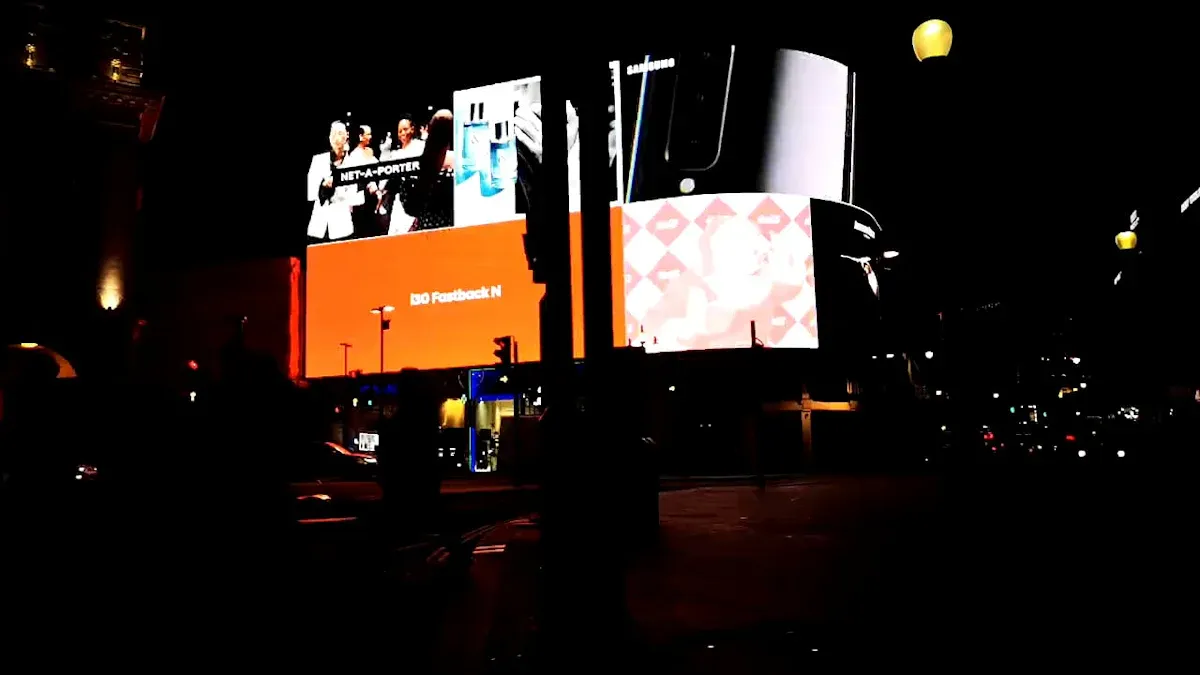
Engagement Benefits
You want your business to get noticed and connect with people. Interactive digital signage helps you do this. When you use interactive displays, customers can touch and swipe the screen. This makes your message easier to remember. People remember what they do, not just what they see.
Studies show interactive digital signage brings in more people. Foot traffic can go up by 32%. Sales can rise by almost 29%. Adding things like touch screens or gesture controls keeps customers interested. They stay longer and learn more. Engagement rates can be 47% higher than with regular signs. Many businesses see a 20-30% jump in conversion rates.
Note: Interactive digital signage can cut wait times by over 35%. Customers feel less bored and happier while waiting.
Here’s a quick look at how interactive digital signage helps engagement:
Metric / Finding | Statistic / Result |
|---|---|
Increase in engagement rates | 47% |
Boost in sales | 29.5% |
Increase in foot traffic | Up to 32.8% |
Conversion rate improvement | 20-30% |
Customers drawn to digital signage vs static panels | 63% vs 58% |
Recall rate of digital signage ads | 83% |
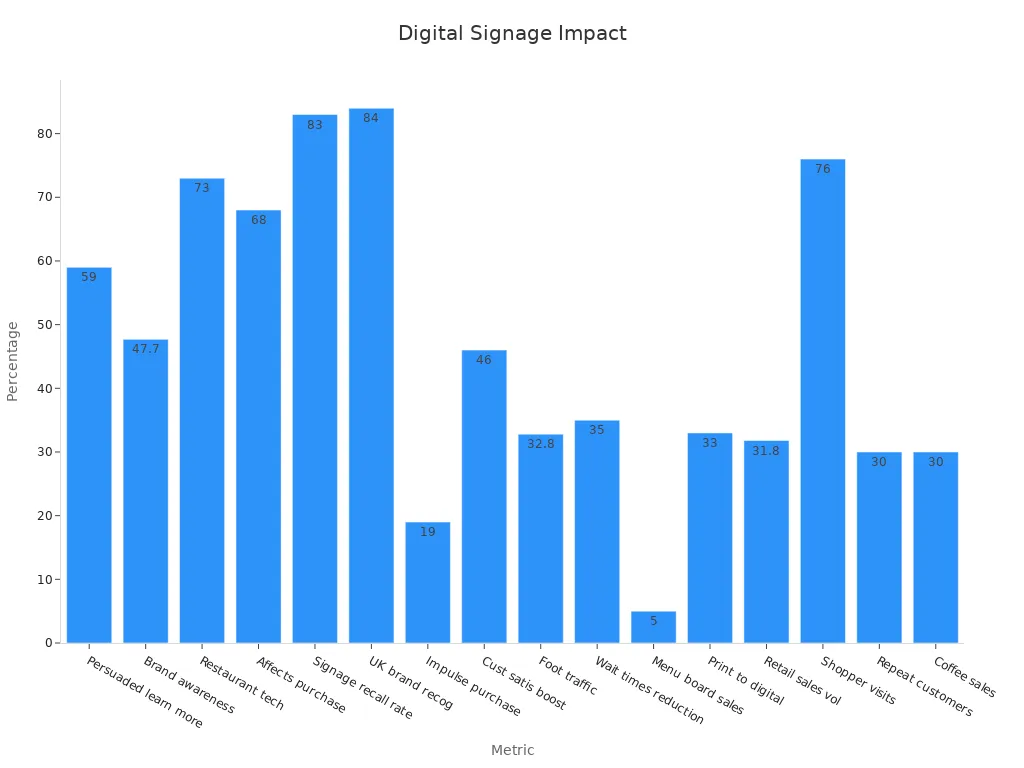
Use Cases
There are many ways to use interactive digital signage. Self-service kiosks let people check in or order food with a touch. Restaurants use interactive menu boards so customers can see choices and change their meals. Retail stores use interactive displays to show product details and reviews. Shoppers can even try virtual makeovers.
Adding QR codes or live social media feeds makes things more fun. For example, L’Occitane used interactive digital signage in 150 stores. They changed the content for each season. This brought more customer engagement and better brand stories. Using interactive displays gives customers a cool brand experience. It makes them want to come back.
Interactive digital signage works in hotels, hospitals, and offices too. You can help visitors find their way, share news, or get feedback with a touch. These solutions help you connect with customers and make every visit special.
Interactive Touch Screen Displays
Features
Interactive touch screen displays are common today. You can tap, swipe, or zoom with your fingers. These screens are easy for anyone to use. Many businesses like them for busy places. Some screens let up to 40 people use them at once. A few even have AI or biometric authentication for more safety.
These displays also give you helpful analytics. The software tracks how people use the screens. It shows heatmaps, dwell time, and user flow. This helps you know what your customers enjoy. Many displays work even if the internet is down. Big brands like Samsung, LG, and Sharp add new features often. The screens have simple menus so everyone can use them.
Tip: Choose interactive touch screen displays with multi-touch and analytics. These tools help you learn about your customers and grow your business.
Applications
Interactive touch screen displays have many uses. Here are some common ways people use them:
Retail stores use these screens for demos and digital catalogs. Shoppers can touch to see more or try virtual makeovers.
Restaurants use touch tables and menu boards. People order and pay right at the table.
Healthcare clinics use check-in kiosks. Patients sign in on the screen, which saves time.
Trade shows and exhibitions use displays to show videos and collect leads.
Automotive showrooms use touch screens for car configurators. You can pick colors and features with a few taps.
The table below shows how these displays help businesses:
Business Setting | Performance Improvement |
|---|---|
Retail Clothing | 35% more sales; 40% fewer product returns |
Automotive Showrooms | More upselling of premium features |
Trade Fairs | More on-site sales and post-event inquiries |
Healthcare | Better patient flow; less staff workload |
You also find these displays in schools, hotels, and airports. The market is growing fast, almost 8% each year. Businesses have more ways to connect with people and stand out.
Cloud-Based Digital Signage
Content Management
Cloud-based digital signage lets you control screens from anywhere. You can log in and change displays right away. You do not need to be at the store to update them. The dashboard is easy to use. You can drag and drop pictures, videos, or live feeds. Plug-and-play digital signage is simple to set up. Just connect your device and start using it.
Managing content is easy with cloud-based digital signage. You can plan messages for different times or places. This helps you reach people when it matters most. Plug-and-play digital signage lets you control many stores or offices at once. You can test which messages work best with analytics and reports.
Tip: Cloud-based digital signage turns screens into a smart marketing tool. You can track how long people watch, how many sessions, and how many buy. These tools show what works and help you do better.
A good content management system works with many media types and keeps data safe. You can measure things like customer engagement, sales, and brand awareness. This makes plug-and-play digital signage more useful and helps your business grow.
Scalability
As your business grows, your digital signage can grow too. Cloud-based digital signage gives you this freedom. You can add new screens or places without much work. Plug-and-play digital signage lets you set up new screens fast. You do not need special skills or a big IT team.
With cloud-based digital signage, you can control hundreds of screens from one spot. This means you can start new campaigns quickly. You can also update all your screens at the same time. If you want to try new ideas, plug-and-play digital signage lets you test them fast. You can use analytics to see which screens get the most views.
Cloud-based digital signage shows dynamic content. You can change messages by time, weather, or what customers do. This keeps your business modern and people interested. Plug-and-play digital signage helps you stay ahead in a changing world.
Benefit | How Cloud-Based Digital Signage Helps |
|---|---|
Easy expansion | Add screens or locations anytime |
Central control | Manage all content from one dashboard |
Fast updates | Change messages instantly everywhere |
Dynamic content | Show real-time info and promotions |
Analytics and reporting | Track what works and improve your strategy |
Video Walls
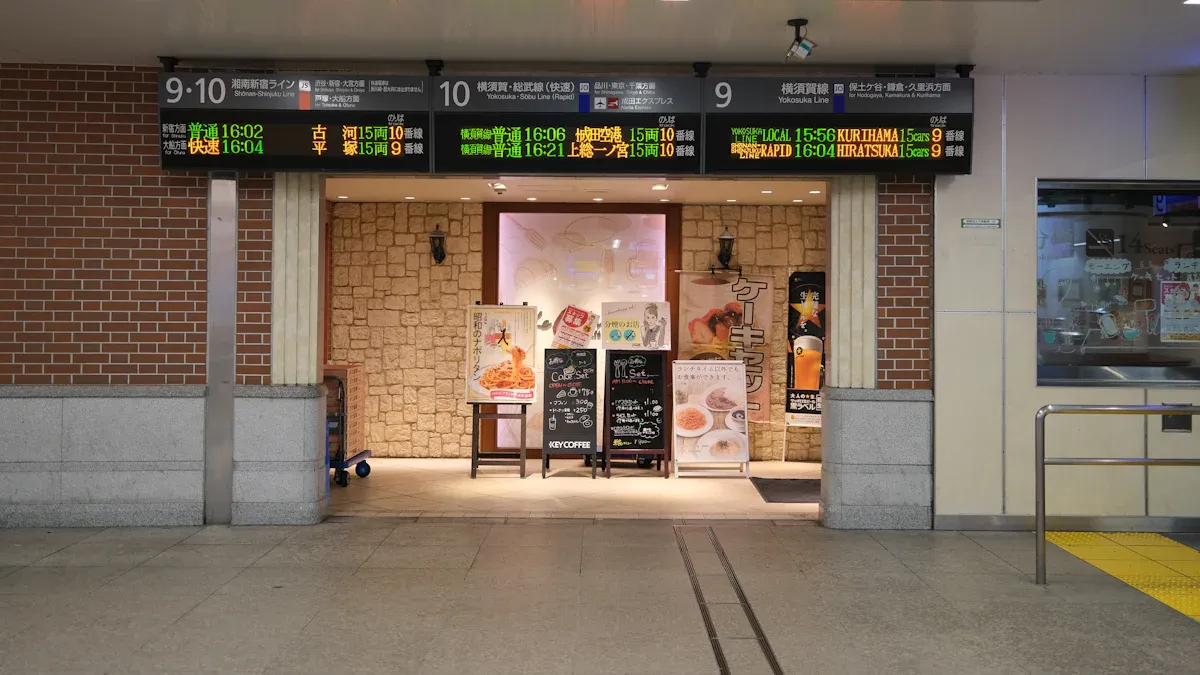
Visual Impact
Video walls help your business get noticed. They are big and very bright. People see your message right away. Video walls make pictures look sharp and clear. You can show high-definition visuals or live feeds. This makes your space look cool and modern. Video walls keep people watching longer. Digital displays can make customers stay up to 30% longer. Video walls do even better. They pull people in and make them want to look. You can use video walls to tell stories or show products. The strong visuals help people remember your brand.
Tip: Put video walls in busy places like lobbies or showrooms for the best results.
Business Environments
Video walls work in many places. Retail stores, hotels, airports, and offices all use them. They are good for sharing lots of information. They also make people say “wow.” Retail stores use video walls to get more sales. Famous Footwear used video walls and got more shoppers and sales.
Here is a table that shows how video walls help businesses:
KPI / Metric | Description | Example Outcome |
|---|---|---|
Audience Engagement Levels | How much people interact with the content | More people paid attention at Famous Footwear |
Conversion Rates | Number of viewers who take action | More sales and more shoppers |
Brand Awareness | How well people remember your brand | 47.7% more people remembered the brand |
Real-time Updates | Ability to change content quickly | Customers were happier |
Video walls let you show special content for each customer. You can change what is on the screen right away. This helps your business stay ready for anything. Many companies use video walls to make visits special. You can add things like phone controls or digital demos to get people involved.
The video wall market is growing fast. It could be worth over $53 billion by 2027. More businesses use video walls because they look great and help you connect with customers in new ways.
Choosing the Right Solution
Needs Assessment
You want your digital signage to really stand out. First, think about what your business needs. Do you want to help visitors, sell more, or guide customers? Many businesses use touch screens because they are simple to use. In 2024, indoor digital signage is used in over half the market. Retail stores use it the most, with almost a quarter of the market. This shows stores depend on these displays for ads and talking to customers.
Here are some important things to know:
Aspect | Key Insight |
|---|---|
Touchscreen Use | 79% of people say kiosks make ordering easier |
Customer Satisfaction | 46% rise with digital signage |
Brand Engagement | 64% of businesses see better engagement |
Flexibility | 60% plan to invest in new signage soon |
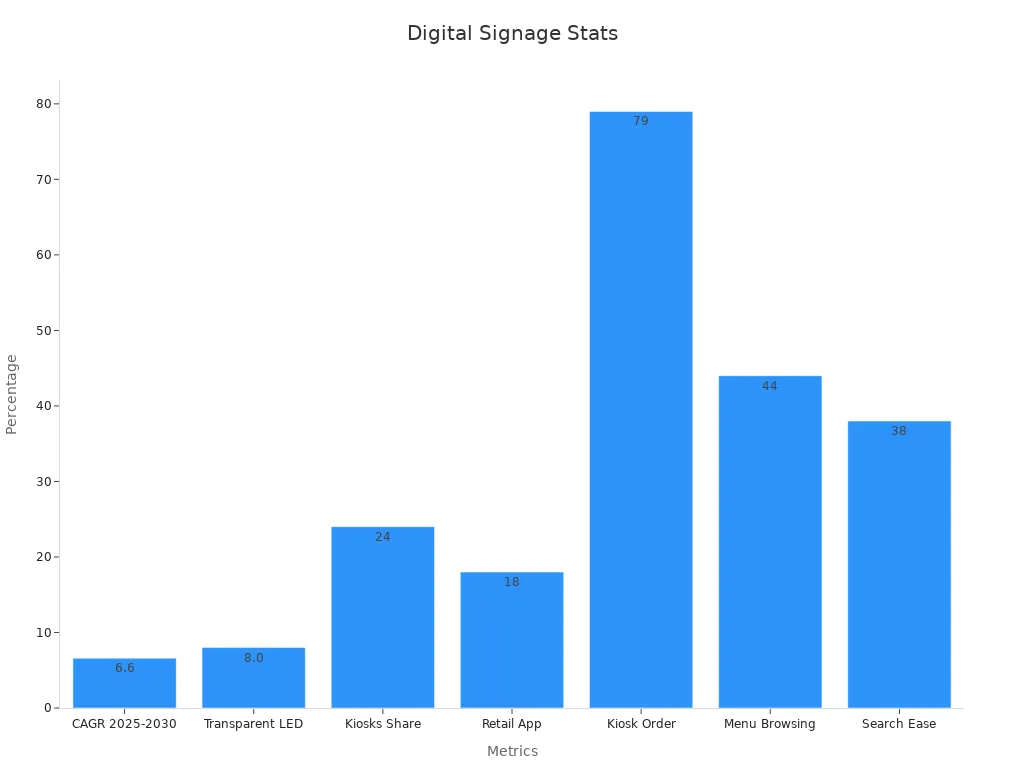
Think about how big you want your screen to be. Most businesses pick screens between 32 and 52 inches. Touch features and being able to change things help you as your needs grow.
Budget Factors
It is important to think about cost when picking a solution. You need to plan for both starting and keeping it running. Hardware, software, and making content all cost money. Subscription fees can be $50 to $200 each month. Cloud-based platforms cost about $100 to $300 every month. Making content can cost $1,000 to $5,000 for each project. Fixing and taking care of your screens is about 10-15% of your hardware budget each year.
Here is a simple list to help you plan:
Subscription and licensing fees
Content creation and updates
Touch screen hardware and installation
Maintenance, repairs, and upgrades
Internet and utilities
Tip: Always check if your solution can be upgraded later. This helps you save money and keep your signage new.
Vendor Support
Having good vendor support is very helpful. You want a company that helps you from the start and every day after. Look for vendors who give training, fix things fast, and answer questions quickly. Ask if they update touch software and hardware. Good vendors help you get the most from your screens.
A strong vendor will also help you with cost and flexibility. They can help you pick the best solution for your business. When you have questions, you want answers right away. This support keeps your customers happy and your screens working.
You have many options when it comes to indoor digital signage. Each solution can boost your brand awareness and help you reach your goals. Think about your space, your audience, and what you want to share. Try a demo or talk to a vendor before you decide. Keep checking your results as your business grows. Technology changes fast, so stay open to new ideas.
FAQ
What is the best screen size for indoor digital signage?
You want a screen that fits your space. Most businesses pick screens between 32 and 52 inches. Large lobbies or video walls may need bigger displays. Always check your viewing distance and room size before you choose.
Can I update my digital signage content remotely?
Yes, you can! Cloud-based systems let you change content from anywhere. You just log in to a dashboard and upload new images or videos. This saves you time and keeps your messages fresh.
How long do commercial digital signage displays last?
Most commercial displays run 24/7 and last 5 to 7 years. You get more life if you use high-quality screens and follow the care tips from your vendor. Regular cleaning and software updates help, too.
Do I need special software for interactive displays?
You do need special software for interactive screens. This software lets you add touch features, track usage, and update content easily. Many vendors include it with your display package.
See Also
Customized Digital Signage Solutions For Retail Healthcare And Business
Best Ten LED Digital Signage Options For Retail Spaces
Using Digital Signage To Effectively Display Information
Leading Ten Commercial Digital Signage Screens For Business Use
Indoor Versus Outdoor Digital LED Signage Display Comparisons

